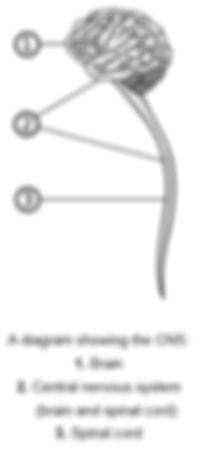Introduction to the Nervous System
- Almarielsa Cansino
- Sep 30, 2020
- 2 min read
The nervous system is an organ system that coordinates voluntary and involuntary actions and responses by transmitting signals between different parts of our bodies.
Below is a chart of how the Nervous system is broken down their structures and their functions.

Central Nervous System
The CNS includes the brain and spinal cord along with various centers that integrate all the sensory and motor information in the body. These centers can be broadly subdivided into lower centers, including the spinal cord and brain stem, that carry out essential body and organ-control functions and higher centers within the brain that control more sophisticated information processing, including our thoughts and perceptions. Further subdivisions of the brain will be discussed in a later section.

Peripheral Nervous System
The PNS is a vast network of nerves consisting of bundles of axons that link the body to the brain and the spinal cord. Sensory nerves of the PNS contain sensory receptors that detect changes in the internal and external environment. This information is sent to the CNS via afferent sensory nerves. Following information processing in the CNS, signals are relayed back to the PNS by way of efferent peripheral nerves.

Autonomic and Somatic Nervous Systems
The PNS is further subdivided into the autonomic nervous system (ANS) and the somatic nervous system. The autonomic system has involuntary control of internal organs, blood vessels, and smooth and cardiac muscles. The somatic system has voluntary control of our movements via skeletal muscle.
As mentioned, the autonomic nervous system acts as a control system and most functions occur without conscious thought. The ANS affects heart rate, digestion, respiratory rate, salivation, perspiration, pupil diameter, urination, and sexual arousal. While most of its actions are involuntary, some, such as breathing, work in tandem with the conscious mind. The ANS is classically divided into two subsystems: the parasympathetic nervous system (PSNS) and sympathetic nervous system (SNS).
Parasympathetic and Sympathetic Nervous Systems
Broadly, the parasympathetic system is responsible for stimulation of “rest-and-digest” activities that occur when the body is at rest, including sexual arousal, salivation, lacrimation (tears), urination, digestion, and defecation. The sympathetic nervous system is responsible for stimulating activities associated with the “fight, flight. freeze and in trauma cases fawn” response: mobilizing the systems of the body for escape or attacking sources of danger.

